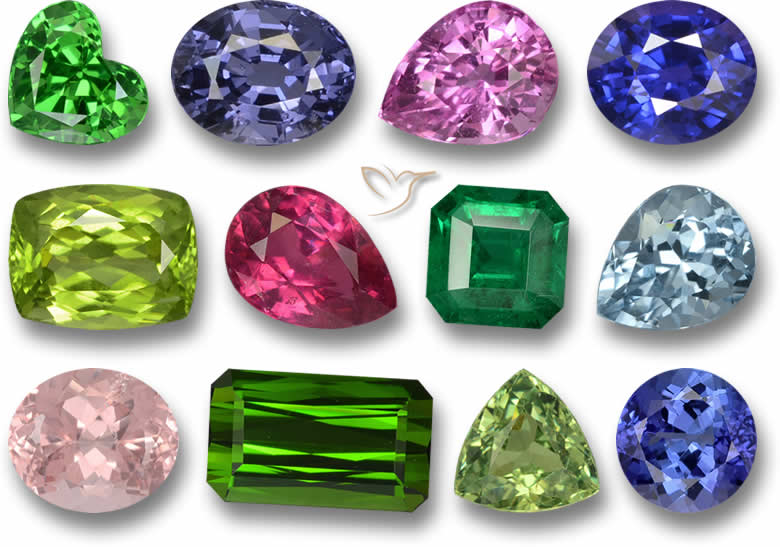How Rarity, Origin, and Market Demand Influence Gemstone Prices
The value of loose gemstones in today’s market is determined by a complex interplay of factors, with rarity, origin, and market demand standing out as primary drivers. These elements not only dictate the price of a gemstone but also shape its desirability among collectors, investors, and jewelry enthusiasts. Understanding how these factors contribute to pricing provides valuable insight for anyone navigating the gemstone trade, whether as a buyer, seller, or appraiser.

The Role of Rarity
Rarity is one of the most significant contributors to a gemstone’s price. Gemstones that are scarce in nature or difficult to extract command higher values due to their limited availability. This scarcity can stem from geological constraints, depleted mining sources, or unique physical properties that set certain stones apart from more common varieties.
Consider the following aspects of rarity that influence pricing:
- Limited Deposits: Gemstones like tanzanite, found exclusively in a small region of Tanzania, are inherently rare due to their singular geographic source. Once these deposits are exhausted, supply dwindles, driving prices upward.
- Unique Characteristics: Stones with exceptional traits—such as alexandrite’s color-changing ability or the vivid fluorescence of Paraiba tourmaline—are prized for their rarity within their own species.
- Historical Exhaustion: Mines like those in Kashmir, once renowned for their unparalleled sapphires, have largely ceased production, making existing stones from these locations exceedingly valuable.
The Impact of Origin
The origin of a gemstone often serves as a hallmark of quality and prestige, significantly affecting its market price. Certain regions are celebrated for producing stones with superior color, clarity, or historical significance, which elevates their worth beyond comparable gems from less distinguished locales.
Examples of origin-driven pricing include:
- Burmese Rubies: Rubies from Myanmar, particularly those exhibiting the coveted “pigeon’s blood” red hue, are among the most expensive due to their rich color and historical reputation.
- Colombian Emeralds: Known for their deep green color and natural inclusions (termed “jardin”), emeralds from Colombia often fetch premium prices over those from Zambia or Brazil.
- Kashmir Sapphires: Sapphires from the Kashmir region of India, with their velvety blue tone, are considered the gold standard, commanding prices far above sapphires from Madagascar or Sri Lanka.
Origin not only reflects quality but also carries a narrative appeal, as buyers associate these locations with centuries of gemstone lore and craftsmanship.
The Influence of Market Demand
Market demand acts as the dynamic force that ties rarity and origin to real-time pricing. Shifts in consumer preferences, economic conditions, and cultural trends can amplify or diminish the value of specific gemstones, even when rarity and origin remain constant.
Key drivers of market demand include:
- Fashion Trends: The popularity of colored gemstones in high jewelry—such as the resurgence of pink spinels or blue sapphires—can spike demand and prices.
- Investment Appeal: As investors seek alternatives to traditional assets, demand for rare gems like fancy colored diamonds or unheated sapphires has surged, pushing prices higher.
- Cultural Significance: In regions where certain stones hold symbolic value—such as jade in East Asia—demand remains consistently strong, supporting elevated prices.
Comparing the Factors: A Pricing Snapshot
The table below illustrates how rarity, origin, and market demand interplay to influence the price of select gemstones, based on general market observations as of April 2025:
| Gemstone | Rarity | Origin Impact | Market Demand | Approx. Price Range (per carat) |
|---|---|---|---|---|
| Burmese Ruby | Very High (limited new supply) | High (Myanmar origin premium) | Strong (luxury jewelry) | $5,000 - $50,000+ |
| Kashmir Sapphire | Extremely High (mines depleted) | Very High (iconic origin) | High (collectors) | $10,000 - $100,000+ |
| Tanzanite | High (single source) | Moderate (Tanzania only) | Growing (modern appeal) | $300 - $1,200 |
| Sri Lankan Sapphire | Moderate (steady supply) | Moderate (good quality) | Stable (broad market) | $500 - $5,000 |
Note: Prices vary widely based on quality, size, and market fluctuations; these ranges are illustrative.
Conclusion
Rarity, origin, and market demand collectively form the backbone of gemstone pricing, each contributing a distinct layer of value. Rarity establishes a baseline of exclusivity, origin adds a premium rooted in quality and heritage, and market demand reflects the real-world appetite for these natural treasures. For buyers and investors, recognizing how these factors converge is essential to making informed decisions in the ever-evolving gemstone market. As supply dynamics shift and consumer tastes evolve, these elements will continue to shape the worth of gems, ensuring their status as both a luxury and an investment endures.

